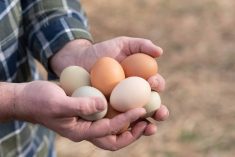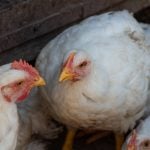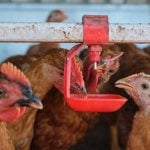Many of you already include pulses in your crop rotations, so you’re well versed on the benefits to your operation of planting lentils, dry peas, dry beans, chickpeas and faba beans.
I have found Pulse Canada and the three Prairie provincial pulse grower associations are packed with useful agronomic information about successfully growing pulses. In Alberta visit the Alberta Pulse Growers website, in Saskatchewan check out the Saskatchewan Pulse Growers website and in Manitoba visit Manitoba Pulse & Soybean Growers.
While I was poking around the Pulse Canada website, I found some interesting recent data on the economic and environmental benefits of growing pulses.
Read Also

Health hazards are often overlooked risks on the farm
While quite different from the dangers posed by farm machinery, hazards such as loud noise or sun exposure require the same proactive attention, the Canadian Agricultural Safety Association says.
The estimated 8.8 million acres of pulses planted and harvested in 2021 contributed $6.3 billion to Canada’s economy, $3.1 billion to our country’s GDP and accounted for 25,907 Canadian jobs. Those pulse acres also eliminated 3.6 million tonnes of carbon dioxide — the equivalent to 1,102,910 passenger vehicles in annual greenhouse gas emissions.
In 2021, 3.8 million acres of peas removed 1.6 million tonnes of carbon dioxide, or the equivalent of taking 363,600 cars off of the road for a year. In terms of chickpeas, 183,000 acres eliminated 63,000 tonnes of carbon dioxide, or the equivalent to the carbon sequestered by more than one million tree seedlings over a 10-year period. Faba beans, 124,000 acres of them, removed 51,000 tonnes of carbon dioxide, enough to charge more than six billion smartphones.
In terms of dry beans, 426,000 acres saved 133,000 tonnes of carbon dioxide, which is equivalent to the greenhouse gas emissions avoided by running 36.4 wind turbines for a year. And, 4.3 million acres of lentils removed 1.7 million tonnes of carbon dioxide — enough to cover one year of electricity use for every dwelling in Winnipeg.
Also, in December 2021, Pulse Canada released detailed data generated from a life cycle assessment (LCA) of Canadian lentils and peas (find it at pulsecanada.com/sustainability). A life cycle assessment is a recognized standard that measures the effects of a product, from “cradle to grave” (during all stages of its life cycle) on the environment.
Regionalized data was collected from 600 pea and lentil producers (farm inputs, yields, management practices, etc.) from Manitoba, Saskatchewan and Alberta. The LCA confirmed, with strong data, the relatively low environmental impact of crop production of Canadian pulses. The summary report went on to state although direct comparisons of the effects on the environment between foods and ingredients is difficult, it’s well established that pulses have a very low carbon footprint relative to other foods.
What a positive agriculture story this data tells. And it’s your story to tell.
The S word
In his Feb. 28, 2023, Grainews column called “Ag shouldn’t play soccer when hockey is what it’s trained to play,” Toban Dyck discusses the challenges of addressing sustainability as an industry and as individual farmers.
He says: “I don’t want to write about sustainability, but I have to. It is the thing, the elephant in the room, the topic of every panel at every farm show, the focus of every organization, the commitment of all levels of government. Ignoring the word and its governing role in agriculture would be foolish.
“That said, like most farmers in North America, and, perhaps, the world, I have heard and read the word ‘sustainability’ too many times. Its power as a vehicle for change is diminishing as a result…. Most talks on sustainability are not interesting. They consist of calls for farmers to take the concept seriously if Canada is to stay in good standing with its current spate of crop customers. Fine. They talk about looming and current government policies and how if farmers don’t take control of changing their own practices, Trudeau will do it for them….
“Sustainability — the ability something has to sustain itself over a long period of time — is not underpinned by emotion or a philosophical trend/concept, it is based on data, on facts.”
I applaud Toban for taking on this topic and even the definition of the word sustainability, not shying away from an issue that will take the industry many years to navigate.
He ends with offering his own definition of sustainability: “Perhaps we should define sustainability in two ways — one for farmers and the other for industry. Farmer definition: the optimal utilization of current research and data. Industry definition: the clear and confirmed conveyance of current research and data to farmers.”
Like Toban, who said, “I can’t name one farmer who thinks his or her operation should only last for one generation,” I don’t know any farmers who aren’t meeting FAO’s definition of sustainable food and agriculture: “To be sustainable, agriculture must meet the needs of present and future generations, while ensuring profitability, environmental health, and social and economic equity.”
Canadian agriculture is sustainable, it’s the lack of data consumers can understand and relate to that is at issue, but that is starting to change.
Canada is the largest exporter and second largest pulse producer in the world. For now, claims that Canadian pulses are some of the most sustainable crops produced in the world, with a low environmental impact and low carbon footprint, have data to back them up. Why not spread the word?
What does sustainability mean to you and your farm? Please drop me a line at [email protected].
















